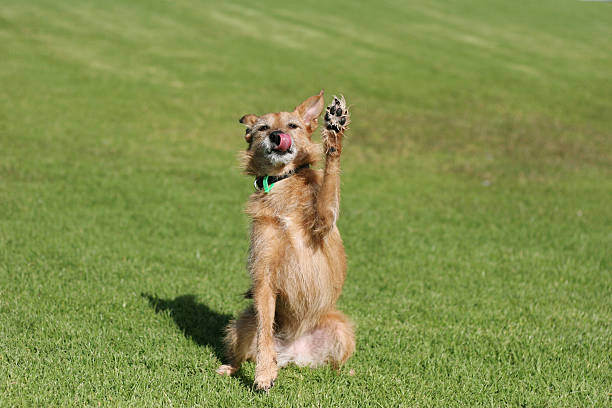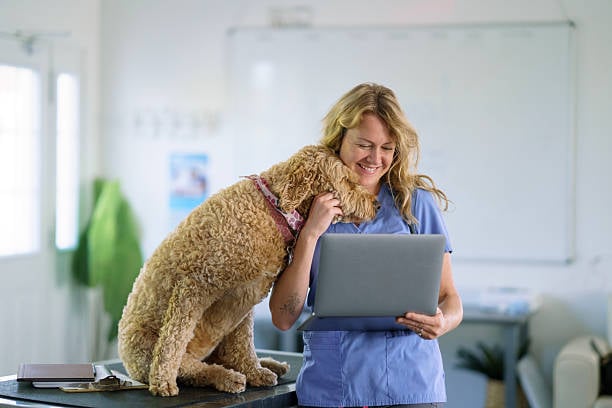There are many elements of dog care that you oversee as a pet-care business. One often overlooked aspect, especially during the warmer months, is protecting their paws from the heat. Hot pavement, sand, and other surfaces can cause severe discomfort and injury to dogs' sensitive paw pads.
Today let's walk through essential tips for protecting dog paws from the heat, ensuring their safety and a pawsitive experience while in your care.

Understand the Risks
Dog paw pads are tough but not invincible. On hot days, surfaces like asphalt, concrete, and sand can reach temperatures that cause burns, blisters, and significant pain. Unlike humans, dogs cannot quickly remove themselves from hot surfaces, making it crucial for pet-care professionals to be vigilant.
Schedule Walks Wisely
One of the simplest ways to protect dog paws is by scheduling walks during the cooler parts of the day. Early mornings and late evenings are ideal times to take dogs out, as the sun’s intensity is lower and surfaces are cooler. Avoid mid-day walks when temperatures are at their peak.
Test the Surface Temperature
 Before taking a dog for a walk, always test the surface temperature. A quick and effective method is the "seven-second rule"—place the back of your hand on the pavement for seven seconds. If it’s too hot for your hand, it’s too hot for a dog’s paws. This simple test can prevent unnecessary burns and discomfort.
Before taking a dog for a walk, always test the surface temperature. A quick and effective method is the "seven-second rule"—place the back of your hand on the pavement for seven seconds. If it’s too hot for your hand, it’s too hot for a dog’s paws. This simple test can prevent unnecessary burns and discomfort.
Use Protective Gear
Dog boots and paw wax are excellent tools for protecting dog paws from hot surfaces. Dog boots act as a barrier between the paws and the ground, while paw wax provides a protective coating that can help reduce the risk of burns. Ensure that the boots fit well and that the dogs are comfortable wearing them. Introduce these protective measures gradually to help dogs get used to them.
Benefits of Dog Boots and Paw Wax:
-
Dog Boots:
- Provide a strong barrier against hot surfaces
- Protect paws from sharp objects and rough terrain
- Available in various sizes and styles to fit different dogs
-
Paw Wax:
- Offers a protective layer on paw pads
- Easy to apply and reapply as needed
- Doesn't restrict movement or feel unnatural to dogs
Provide Paw-Friendly Surfaces
Create paw-friendly walking paths within your facility. Grass, dirt, and shaded areas are much cooler alternatives to pavement and concrete. If your facility has outdoor play areas, consider installing artificial turf or using shaded areas to keep dogs comfortable and safe during playtime.
Hydration and Rest Breaks
 Ensure dogs have access to fresh water at all times and encourage regular rest breaks during walks and playtime. Hydration is crucial for overall health and can help keep dogs cool. Provide shaded rest areas where dogs can take a break from the heat.
Ensure dogs have access to fresh water at all times and encourage regular rest breaks during walks and playtime. Hydration is crucial for overall health and can help keep dogs cool. Provide shaded rest areas where dogs can take a break from the heat.
Tips for Keeping Dogs Hydrated:
- Provide multiple water stations throughout your facility
- Use portable water bottles for walks and outdoor activities
- Add a canine splash pad to your facility for cooling fun
Monitor and Care for Paw Health
Regularly inspect the dogs’ paws for signs of burns, blisters, or other injuries. If you notice issues, clean the affected area with mild soap and cool water, and apply a pet-safe antiseptic. Inform the pet's parent immediately and suggest a visit to the veterinarian if the injury seems severe.
Educate Pet Parents
As a pet-care business, part of your role is to educate pet parents about the importance of protecting their dog’s paws from heat. Share tips and advice through newsletters, social media, and in-person conversations. Educated pet parents are more likely to take preventative measures, ensuring their pets remain safe even when they’re not in your care.
 Protecting dog paws from the heat is a crucial aspect of pet care, particularly during the warmer months. By understanding the risks and taking precautions in routine and spacial planning, your pet-care business can ensure the safety and comfort of the dogs in your care.
Protecting dog paws from the heat is a crucial aspect of pet care, particularly during the warmer months. By understanding the risks and taking precautions in routine and spacial planning, your pet-care business can ensure the safety and comfort of the dogs in your care.
Grow your pet-care business with Gingr. Schedule a demo now!
Subscribe to the Gingr Blog






